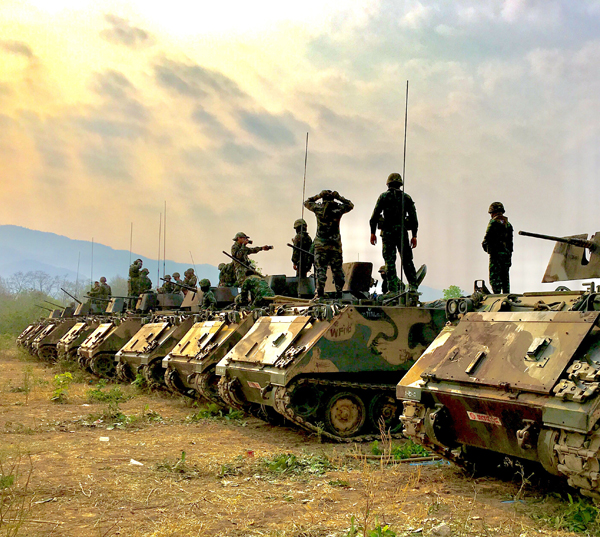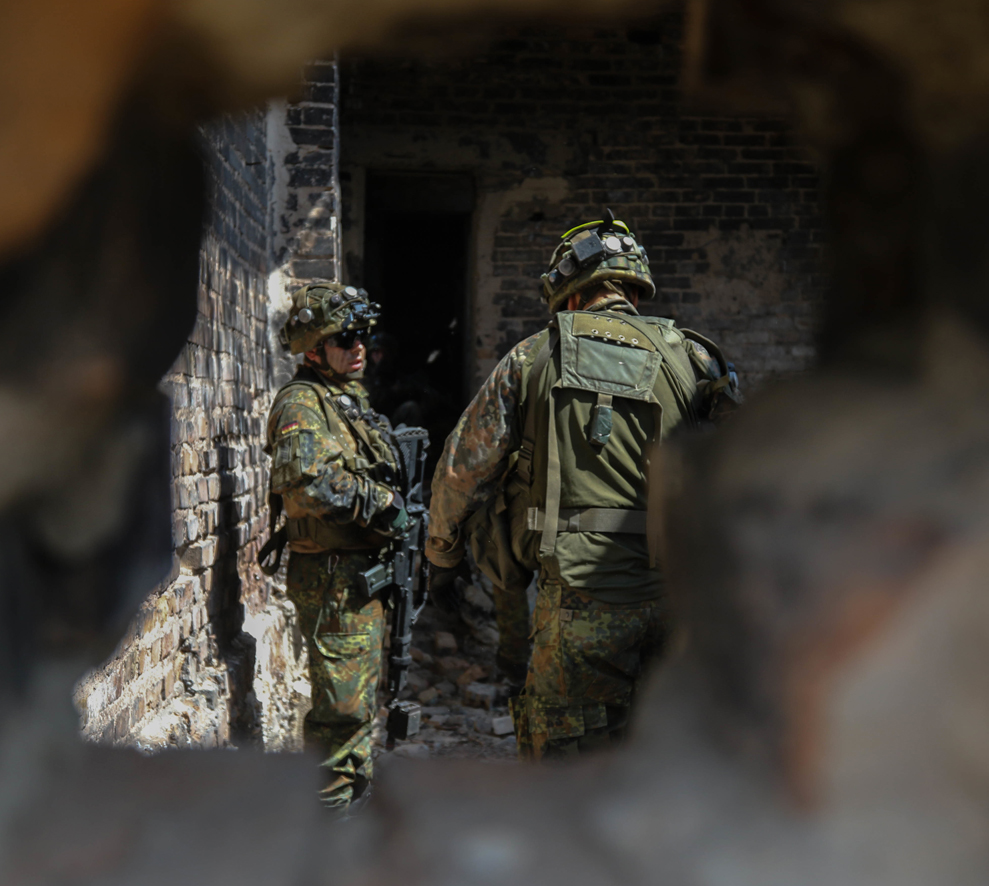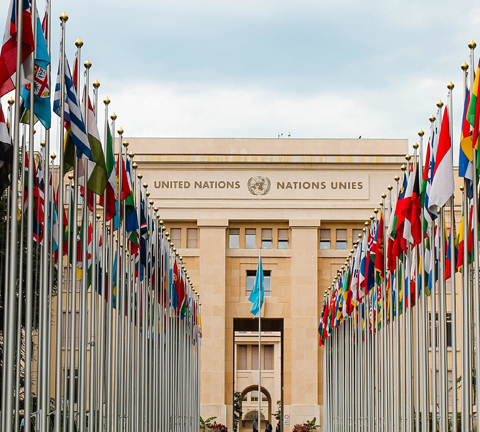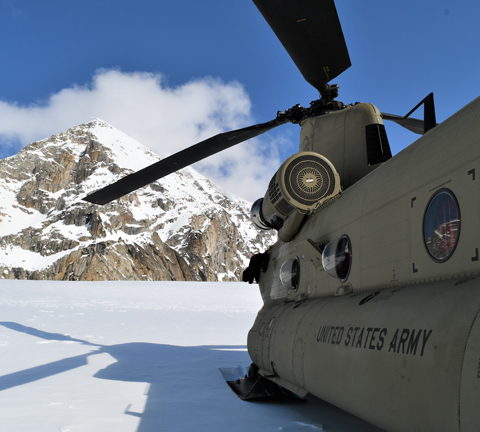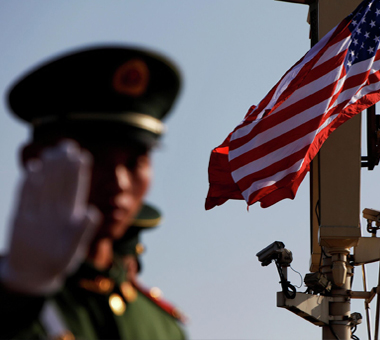Preface
Examining the future trends of militarization in the world and the Middle East became of the very complicated issues, for it no longer limited to the conventional form of armies' strategies, bases, and weapons, rather, it goes beyond the same towards the states' struggle to acquire and develop the monitoring, reconnaissance, espionage, surveillance, imaging, and self-driving vehicles equipment, besides the political war tools like "the oriented media" and the economic sanctions. The foregoing comes as a part of a hybrid and integrated system in tandem with the soft Power, Smart Power, and Hard Power. These hybrid military phenomena are considered to be one of the most dangerous conflict patterns in the Middle East region, which are also related to the fields of competition among the international and regional powers.
For the sake of offering a futuristic perspective for the global military trends, it is necessary to stop for an analytical interpretation for the international and regional systems, pointing out to the main changes and transformations during the past century up to the present century.
World Order Trends over a Century
The world order witnessed many overwhelming changes and transformations during the 20th century. In the first half of the 20th century, World Wars erupted, two massive revolutions took place in Russia and China, five empires collapsed (Ottoman, German, Italian, Japanese, Austrian, and Hungarian Empires). A fundamental change occurred on the nature of the world order which was characterized with being multi-polar and balance of powers, where no state alone was allowed to maintain a supremacy or a dominance that other states' alliance may not strongly respond thereto. Such order, then, succeeded to prevent a single hegemonic power to emerge.
However, this lead at the end to the eruption of WW1, ensued by a period of chaos, followed by WW2, not to mention the racial, sectarian, and doctrinal wars and conflicts, as well as the regional wars over resources, which resulted the compulsory migration to become common, and had effects on the stability and the security of the Middle East and the European continent. The ramifications of which are still going on until now.
After that, the US became the only superpower. It started to make plans of the strategic level to develop its comprehensive interests and capabilities on a global level, especially in the military affairs. The new world order, back then, depended on constituting political, economic, and military alliances with many states in the world, especially in the Middle East region.
In such regard, we should consider five major features that played and is playing a huge role in forming the previous and current international landscape and its military trends:
1. Some Asian countries achieved rapid economic growth, like India, China, and Indonesia. These relative transformations have important repercussions in political and military geography, and become a point of concern for United States and its Western allies regarding the future of the global order. Therefore, the US and its Western allies determined the upcoming military and strategic trends in East Asia, the matter that affected the Middle East in one way or another.
2. The increase of armament in the world, the emergence of non-state military actors as well as the criminal organizations, the competition between the allied and rival countries in the field of the military and defense industries, in addition to that many states and terroristic organizations sought to acquire mass destruction weapons. The Iranian file, maybe, and what the negotiations with Washington might lead to, may determine the sides of the new military alliances, polarizations, and competition in the region.
3. The dangers associated with chaos and internal divisions have multiplied. The scale of poverty, hunger, regional and civil wars have escalated. Many fragile states emerged, in which the central political authority therein was unable to expand control and impose its sovereignty, the matter that led to famines, diseases, and compulsory migrations ensued with their humanitarian, and sometimes, geopolitical effects, many countries in the world, more specifically: the European continent, were affected by the aforesaid.
4. the rapidness of the technological novelties, along with the emergence of a new and changing methodology of military dimensions, which its main title was acquiring the Fifth and sixth Generation technologies, especially in the Artificial Intelligence, Cyber, Stealth technologies, and accurate directing, especially with the proliferation of the military activities within what is known as (the Shadow Wars and Gray-Zone conflicts) in addition to the hybrid operations executed from behind the horizon, and otherwise the activities which not only the states are carrying out, but also the non-state groups and actors.
5. New powers emerged and raised, explicitly expressing being unsatisfied with the current world order, like Iran, China, and Russia. The probabilities for the next twenty years indicate that China and/or Russia would achieve a strategic balance with the US and its allies. Regarding this point of view, we can interpret China and Russia moves, such as: the Russian-Ukrainian friction and the conflict between China and Taiwan to be an indicator on new models of militarization. The future, perhaps, would witness a block that contains Russia, China, Iran, and North Korea in order to regain the balance with AUKUS alliance, which contains Australia, the US, and the UK.
.jpg-%D8%A8%D8%A7%D9%8A%D8%AF%D9%86.jpg)
The US Future Military Trends
Since the 1950s of the previous century, the American strategic thinking regarding how to be ready for war against the global superpowers competing with it in strategic areas of influence, like the Middle East and Europe, and mobilizing the conventional troops before moving them to conflict zones.
However, September 11 attacks had its influence on the operations' nature and battle fields, same as on the models and forms of future wars. The emergence of new practices by the terroristic organizations, besides the emergence of what is known as the Gray War, Hybrid War, and Guerilla War led to unpredictable threats. Hence, the conventional roles of armies in ordinary wars receded, while the importance of acquiring the factors of technology, weapon of knowledge, information, artificial intelligence, and cybernetics became of an increasing importance. For the first time after WW2, the military array all over the world underwent a review.
The same can be seen in the trends of the American national security trends and national defense strategies during the last years. Such trends were focused on the principles of pluralism; the comprehensive and enduring partnership worth the allies and friends, and the cooperation with the new centers of influence in the world, besides involving with the nations, institutions, peoples, and the Smart Power via (integrating different elements of national capabilities, whether diplomatic, developmental, or military, and using them effectively and efficiently) in order to lessen the cost, and limit the geography of the extensive American military expansion on the long run, replacing the latest with the technological, cybernetic, Artificial Intelligence, and satellites to cover an entire region without the need to send troops or incur the increasing burden of logistics, in a time where the American military bases are arrayed in more than 80 states around the world, where the number of such bases exceeds 750 ranging from small, mid-size, and large, with some American bases situated in the Middle East.
Therefore, the American military strategy is tending to lessen its constant existence within the military bases in the Middle East, especially after the US withdrew it forces from Afghanistan while another expected withdrawal might be in Iraq. The American military strategy is also tending to depend on some states to store the equipment and weaponry only, with a possibility to a prompt mobilization and armament in case the US or its conventional allies interests come under danger.
On another hand, the US and the NATO are underway to transfer their strategic weight towards East Asia in order to constantly press on China and Russia economically, Militarily, and informationally. This is done throughout involving in very expensive plans to establish missile defense systems in Europe and elsewhere.
According to the Russian estimations, such trend is a threat on Russia's national security, where the US and some Western power afforded military, economic, and political support to Ukraine, as well as some states independent from the USSR, in order to expand the European Union of the NATO as a kind of (suffocation strategy) the Western states are practicing against Russia.
Due to Russia's need to secure its geographical ability (of land and sea) to access the world, the tension on Russia's border with the West is reinforcing Russia's struggle to establish more military bases, or the military deployment in some Middle East and North Africa states, where Russia annexes Crimea in 2014, intervened militarily In Syria in 2015, and secured more influence and sustainability of its military bases on the shores of the Mediterranean.
Although the confrontations between the superpowers mostly take place in the arenas of the “grey zone” but the interest in the conventional armies can be noticed again, as part of the preparations of the US military time-race to develop its conventional and nuclear arsenal of weapons, in order to ensure keeping its military supremacy in operations arenas on world level, as Washington tends to update and develop its military arsenal to fit future wars, especially in the fields of space and cyberspace.
Similarly, Russia and China seem to accelerate the updating and the developing of their military systems, with a clear focus on the assault, defense, and hyper-sonic missiles systems. The two states supremacy in such regard over the US might be a reason enough to re-distribute the US military financial resources in order to update its arsenal. The same can be realized by comparing the relative decrease in the US military expenditures in the Middle East and Europe to the US intention to increase its defense budget.
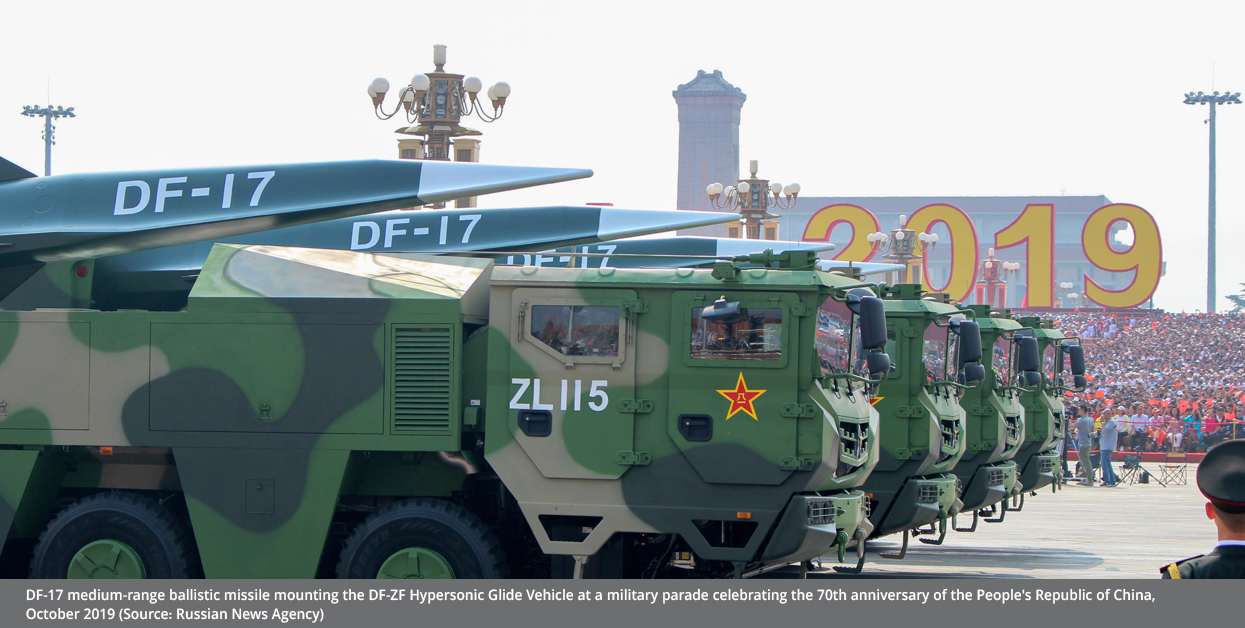
The Strategic analysts almost unanimously agree that the current and upcoming conflicts are all about the digital technology and the digital space, and that the arenas and the fields of such conflicts will be the human minds and the information and knowledge they contain, instead of traditional arenas and battlefields. In addition, analysts almost agree that technology and knowledge militarization will be an alternative to forces, equipment, and ammunition militarization, and that the issues of technology and cyberwars are likely to play a major role in the international strategic and geopolitical competition between China and Russia.
Competition of Superpowers, and Engineering the Next World Order
Tension escalation between the United States and the West on the one hand, and China and Russia on the other hand, will remain one of the most significant military indicators in the world for the following reasons:
First, the differences in policies, values, cultures, and interests between East and West, as the West believes that Russia still presents itself intellectually, behaviorally, and ideologically as the legitimate successor of the former Soviet Union.
Second, the geopolitical intersections in the superpowers' areas of influence and interest, especially in Caspian Sea region and the resource-rich Baltic states, in addition to the security sensitivities arising from the convergence of geographical areas in Syria, Ukraine, Iraq, Yemen and sometimes Europe. Eurasia region is a fulcrum for international hegemony, this region is deemed to be the Heart of the World, as it includes 75% of the energy resources, 75% of the world's population, contributes to 60% of the world's GWP, and it has the most important straits and waterways which are vital to international navigation.
Third, the mutual concern and suspicion between the two parties in the field of military cyber capabilities. No year passes with Russia and the US would announce developing a new weapon in the mutual strategic deterrence arsenal. So far, the US army comes first, depending on an enormous military expenditure, shown in the table below:
.jpg-%D8%B1%D9%88%D8%B3%D9%8A%D8%A7-%D8%A7%D9%84%D8%A7%D9%86%D9%81%D8%A7%D9%82.jpg)
The American shift to Central and Far Asia can be read in the light of the geopolitical competition. This affects -in different scales- on the Middle East, unlike the historical interest in the region since the 1950s of the last century, American military resources are shifting to confront the accelerating Chinese rise.
The Middle East as an Arena of Military Operations
The Middle East is still a strategic arena for the competition between the world's superpowers. The United States is aware of the region's importance in terms of its geopolitical location; natural resources of oil and gas; and the strategic corridors and straits through which dozens of oil, gas and other cargo tankers pass.
We can say that the US military presence in the Middle East will continue on the short and medium terms, due to many of the following indicators and limitations:
1. There is a need for the US military presence in order to ensure the security of the seas, oceans, and waterways, at a time when maritime tensions are increasing; the operations of piracy and hijacking ships, loaded with oil and gas are increasing, not to mention the escalation of the competition and ambitions between the regional countries to expand their sphere of influence and maritime space, as the regional states are seeking to control or have the influence on the strategic strangulation areas, such as the straits, this is in addition to benefit from the wealth and marine resources. Accordingly, the United States sees that the continuation of its military presence is a necessity. Therefore, the naval military bases and air military bases will remain one of the most important tools of militarization, taking into consideration the balance of power in the Middle East region.
2. From the US and the West point of view, there is a necessity for the continuation of the US presence in the Middle East, due to the Red Sea, which 8 Arabic, African states, besides Israel overlook. The Red Sea connects the Suez Canal to Bab al-Mandab Strait, through which more than 95% of oil passes. On the other hand, 7 Arab Gulf states, in addition to Iran, are overlooking the Persian Gulf. The Strait of Hormuz is the only sea hub for most of the countries overlooking it, where about 97% of oil exports from the Arab Gulf Cooperation Council pass through the strait.
.jpg-%D9%82%D9%86%D8%A7%D8%A9-%D8%A7%D9%84%D8%B3%D9%88%D9%8A%D8%B3.jpg)
Based upon the aforesaid data and facts, it seems that futuristic trends emphasize on more militarization in the Middle East, in a similar manner to how it was after the end of WW 1, WW2, and the Cold War.
This trend, which began after September 11, 2001 attacks, reinforced synchronically with the so-called “Arab Spring” in 2011, because of the new realities emerged from these transformations, in addition to the emergence of non-state actors, the emergence of extremist thought, and the emergence of extremist and cross-border terroristic organizations; such as Al-Qaeda, ISIS, and other organizations that threatened and still threatens the American and Western interests, besides many Middle Eastern countries.
Finally, it can be said that the new military models and dimensions, concurrent with the informatics, technical, and technological development witnessed by the world, based on basic factors which are (information, computers, and communications) led to the recede of the traditional armies and heavy equipment, while the options of the Fourth and Fifth Generation of wars, cyber wars, conflict in the gray region, and the hybrid operations targeting all economic, political, military, security, and development components of the state have advanced. Therefore the future trends in the global militarization will be related to soft power, smart power, and having the knowledge to confront cyber wars.
The opinions expressed in this study are those of the author. In no way does Strategiecs take responsibility for the views and positions of its author on security, economic, political, social, and other issues, and such views and/or positions do not reflect those of Strategiecs.
Keep in touch
In-depth analyses delivered weekly.

Related Analyses:







